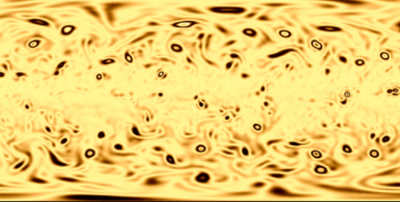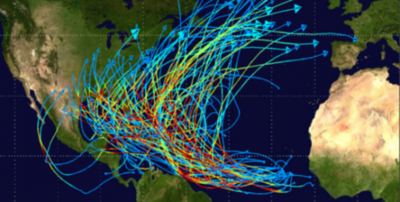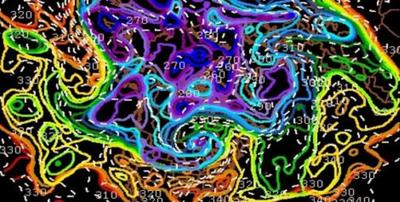General Circulation
PAOC researchers continue a long history at MIT of fundamental investigation into atmospheric dynamics and the general circulation of the atmosphere. Building on the fundamentals of rotating and stratified fluid dynamics, the modern focus is on research problems such as how the stratosphere and troposphere interact, how the general circulation may change in response to climate change, and how moisture affects the dynamics of extratropical and tropical circulations.
 The general circulation of the atmosphere varies depending on climate in simulations with climate models, and has likely varied substantially over the history of the earth. But the physical basis of the response is often poorly understood, and points to the need for a better understanding of the underlying dynamics. A notable example is the poleward shift of the mean surface westerlies in response to warming found in many climate models. One promising approach is to try to use fluctuation dissipation relations to link unforced variability (annular modes) to the response of the circulation to forcing. Professor Plumb and his group are working on understanding the extent to which fluctuation-dissipation relations can be applied to forcings in the atmosphere, including forcings that act primarily in the stratosphere.
The general circulation of the atmosphere varies depending on climate in simulations with climate models, and has likely varied substantially over the history of the earth. But the physical basis of the response is often poorly understood, and points to the need for a better understanding of the underlying dynamics. A notable example is the poleward shift of the mean surface westerlies in response to warming found in many climate models. One promising approach is to try to use fluctuation dissipation relations to link unforced variability (annular modes) to the response of the circulation to forcing. Professor Plumb and his group are working on understanding the extent to which fluctuation-dissipation relations can be applied to forcings in the atmosphere, including forcings that act primarily in the stratosphere.
Latent heat release associated with phase changes of water makes the application of dynamical theories to the atmosphere particularly challenging. Latent heat release is important for tropical and extratropical dynamics of the current climate, and becomes more so in warmer climates. Professor O’Gorman and collaborators have shown using simulations with an idealized general circulation model that latent heating must be taken into account for a proper understanding of dynamical features such as the extratropical static stability and eddy length scale. A recently derived effective static stability has been found to capture the important effects of latent heating on moist eddy circulations.




